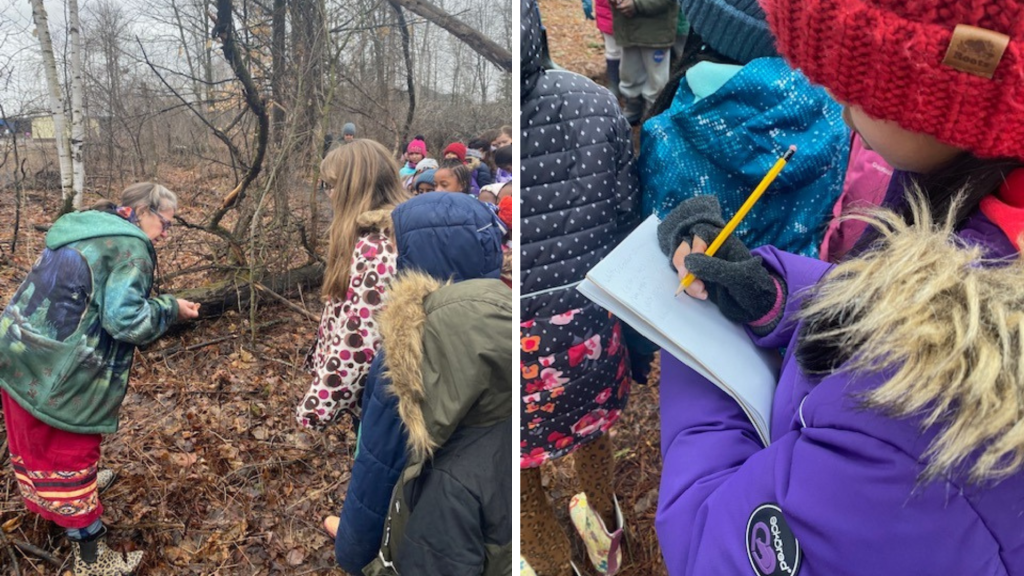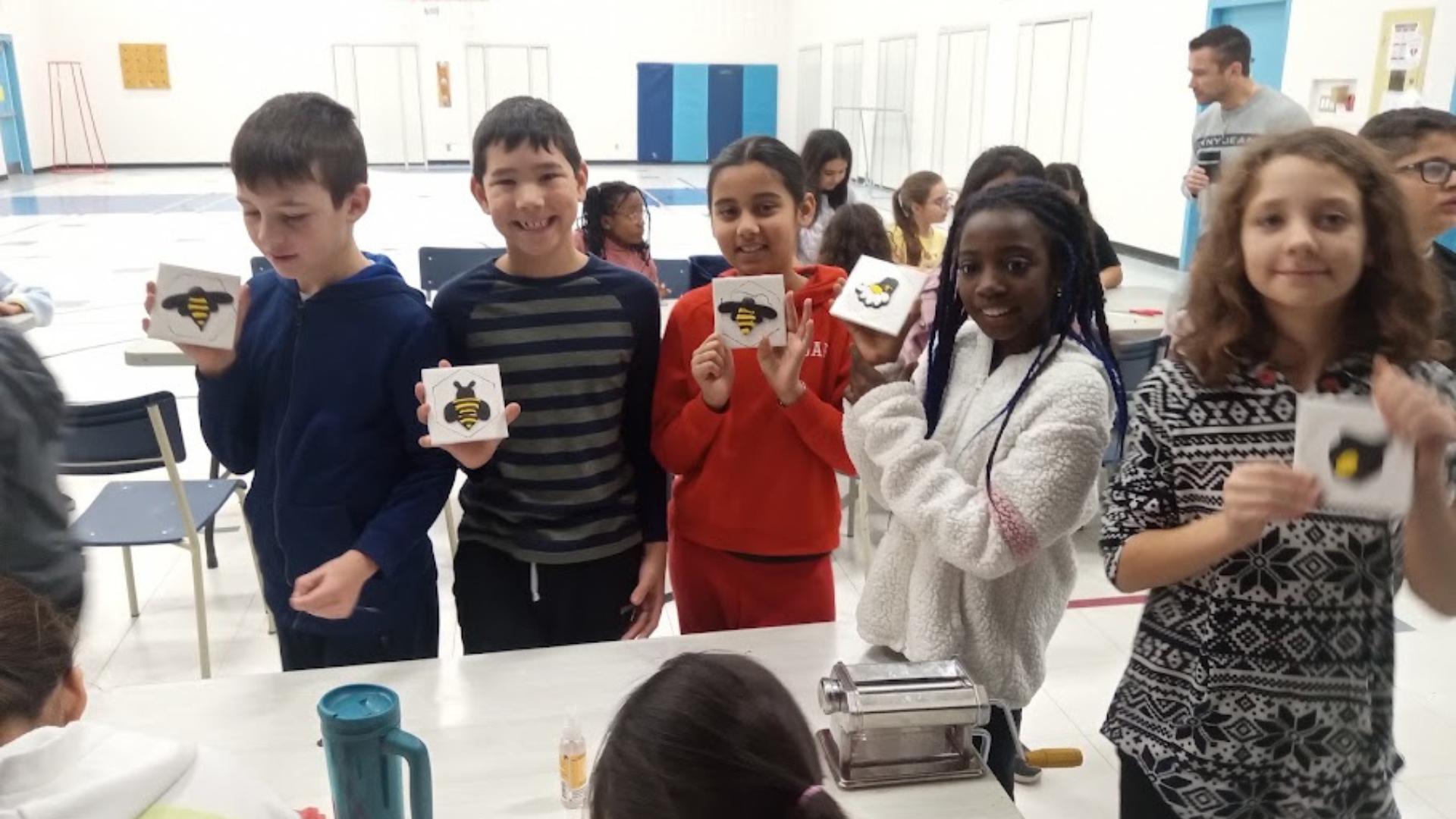St. Bernard School was buzzing with excitement last year as students and staff embarked on a Deep Learning journey to save the bees. Inspired by the patron saint of beekeepers, Saint Bernard, the project, aptly named BEE Hope, seeks to create a brighter future for students and the bee population.
The Inspiration Behind BEE Hope
The inspiration for this project came from a collaboration with Maria Saracino, a well-known local artist specializing in polymer clay. Under Saracino’s guidance, every student and staff member created a hexagonal tile featuring a symbol of Canada. These tiles were placed around a model of St. Bernard, designed by Saracino, and displayed in the school foyer. The purpose of this display is to serve as a reminder that, like the interconnected ecosystems of nature, we are all part of the same school community and can achieve great things when we work together.
Hope for the Future
During the mural project, the students learned about bees and realized that numerous pollinators are at risk of extinction. They thought about how their school could help the future of pollinator bees, considering their vital role in sustaining healthy ecosystems and ensuring food security. Eventually, they came up with the idea of creating a pollinator meadow in the schoolyard, which would be designed, planted, and maintained by the students.
Connecting with Nature and Community
St. Bernard, an urban school, was enthusiastic about the opportunity this project provided students to connect with nature and care for the Earth. The students started working on the pollinator meadow and sought community leaders’ help to shape the project. The ECO Club invited Marlene Souliere, an Indigenous Knowledge Keeper, to the school to help them with the project. She took them on an informative medicinal walk through a nearby forest and taught them about the relationship between the land and the people. Souliere helped the students compile a list of native pollinator plants that would support the bee population in the area.

Looking Ahead
In May, the school hosted Shelly Candel, the Director of Bee Ambassadors, and Mark Cutts, a local beekeeper, who shared their expertise with students, deepening their understanding of these hard-working insects and their vital role in biodiversity. Additionally, the school incorporated various small projects into the BEE Hope initiative. Some examples included integrating bees and life systems into science learning across all grades, creating community posters, writing letters to local nurseries for plant donations, and producing eco-friendly beeswax wraps to fund the creation of the meadow.
At St. Bernard, BEE Hope isn’t just about saving the bees; it’s about fostering a deeper connection to the environment and each other, inspiring hope for a brighter future.
